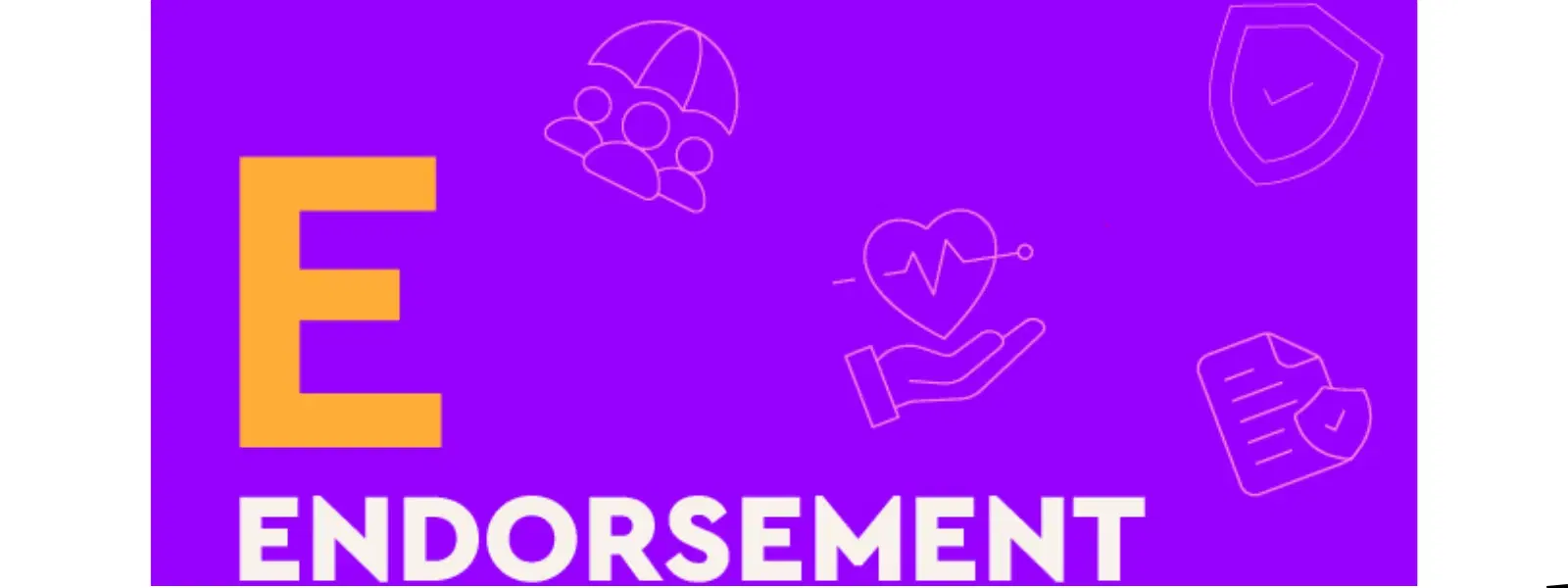
Insurance
•01 min read

Welcome to our brand-new series, A-Zs of Insurance. In this series, we will venture into the world of insurance to breakdown insurance jargon for you, so you’re empowered to make informed decisions about your financial security.
Imagine this - Mohit, a 28-year-old man, purchased a term insurance policy 2 years ago, with this mother as the beneficiary. He got married a few months ago and now wants to add this wife as a beneficiary to his term insurance.
Will he be able to add her to the same policy? Of course, with the help of an endorsement.
Let’s see how an endorsement works.
An endorsement is a change or addition to your policy, which modifies the original document.

You can make an endorsement if you wish to:
1. Alter your coverage by increasing/decreasing it, adding riders, including more features, etc. For instance, if you own health insurance and add a personal accident rider to it during your next premium payment.
2. Correct any errors in your name, address, contact details, coverage, T&Cs, etc. For instance, if your name is misspelt in the policy document, you can get it corrected.
3. Customise it to any changes in your life, like birth, marriage, property investment, death, etc. For instance, if you own a family floater and have recently become a parent, you can add your child the plan.
Endorsements are typically of two types:
1. Financial endorsements

These changes can have a direct impact on your premium, like age corrections, adding riders, increasing your coverage, changing your city of residence, adding new members to health policies, etc.
Example: Prerna, a 30-year-old woman, owns a family floater health insurance plan. It covers her and her parents. She has recently gotten married and wishes to add her partner to the plan. This endorsement will be financial, as adding another member will lead to increased coverage, and therefore, a hike in the premium.
2. Non-financial endorsements
These changes do not impact your premium, like name corrections, updating your contact number, changes in your marital status/banking info, etc.
Example: Rohan buys a term insurance plan. When he checks the policy document, he notices that his first name has been misspelt to ‘Rihan’. Changing the same will count as a non-financial endorsement, as his premium will not be affected by it.
The process of endorsement is simple.
Typically, you need to inform your insurance provider about the change you wish to make. They’ll then endorse your policy document themselves or ask you to do it online. Once the change has been updated, you’ll get a fresh policy document that reflects the same.